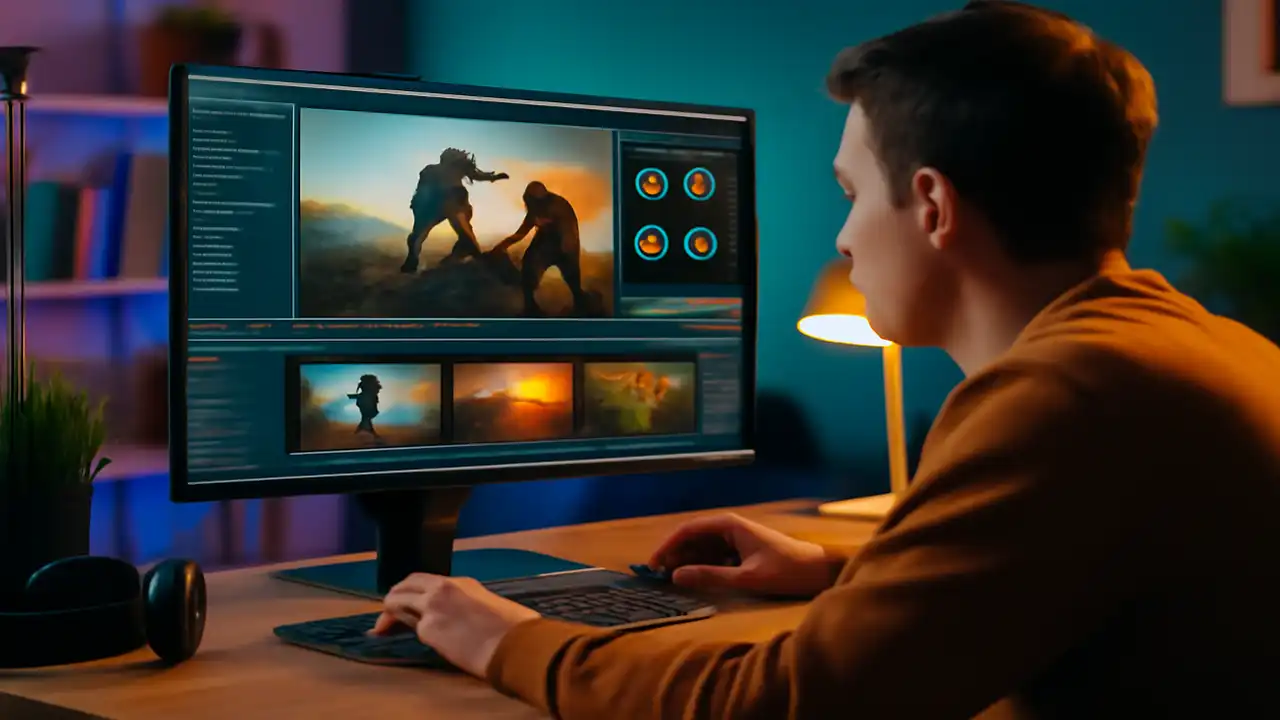Discover how to structure your video for maximum storytelling impact. Learn expert editing techniques, pacing, and SEO strategies to boost engagement and visibility. Perfect for creators aiming to elevate their video content.
How to Edit Videos for Storytelling: Expert Tips to Structure Your Video for Maximum Impact

Why Video Editing for Storytelling Matters
In today's digital world, video content reigns supreme across platforms like YouTube, Instagram, TikTok, and more. But simply capturing footage isn’t enough—how you edit your video for storytelling can make or break viewer engagement. Editing is not just about cutting scenes; it’s a powerful craft that shapes the narrative, evokes emotions, and delivers your message with clarity and impact. For creators, marketers, and filmmakers, mastering video editing techniques for storytelling is essential to maximize viewer retention and conversion rates.
This article delves deeply into how to structure your video for storytelling, providing a comprehensive guide filled with professional tips, techniques, and SEO best practices. Whether you are a beginner or an experienced editor, understanding how to align your editing with storytelling principles will boost your video’s effectiveness and help your content stand out in crowded digital spaces.
Understanding the Role of Editing in Storytelling
Editing is the invisible art that breathes life into raw footage. It controls pacing, mood, and narrative flow—elements critical to storytelling. Proper editing turns scattered clips into a compelling story that captivates viewers from start to finish.
Key Aspects of Storytelling Through Editing
- Narrative Structure: Every story has a beginning, middle, and end. Editing ensures these parts connect logically, maintaining viewers' interest.
- Pacing and Timing: Adjusting the length of shots controls the rhythm of the story, creating suspense or delivering information quickly.
- Emotional Impact: Through selective cuts, transitions, and effects, editing can amplify feelings like joy, tension, or empathy.
- Visual Cohesion: Color grading, shot sequencing, and consistency in style help establish the video's tone and brand identity.
Effective editing integrates these elements seamlessly, making storytelling engaging and memorable.
Practical Tips and Techniques for Structuring Your Video
- Start with a Strong Hook
The first 5-10 seconds are crucial. Use impactful visuals or a provocative question to grab attention immediately. - Follow the Three-Act Structure
- Setup: Introduce characters, setting, and conflict.
- Confrontation: Develop tension or challenges.
- Resolution: Deliver payoff and closure.
- Use Jump Cuts and Match Cuts
These transitions help maintain flow and emphasize narrative connections without jarring the viewer. - Apply the Rule of Thirds in Framing
Balanced shots guide the viewer’s eye and enhance storytelling visually. - Leverage B-Roll and Cutaways
Supplement your main footage with supporting visuals to reinforce context and keep the story dynamic. - Incorporate Sound Design and Music Thoughtfully
Audio layers complement the visual narrative, heightening emotional resonance. - Keep It Concise
Remove redundant or off-topic content to sustain engagement and prevent viewer drop-off.
SEO Optimization Tips for Video Storytelling Content
- Keyword Research and Usage
Incorporate relevant keywords such as “video editing for storytelling,” “how to structure video,” and long-tail keywords naturally within titles, headings, and body text. - Meta Descriptions and Titles
Write clear, compelling meta descriptions under 160 characters that include primary keywords to improve click-through rates. - Alt Text for Images
All images should have descriptive alt text embedding target keywords. For instance, “Example of three-act structure in video editing” helps search engines understand your visuals. - Use Descriptive File Names
Name your video and image files with relevant keywords before uploading. - Optimize Video Transcripts
Including transcripts with keyword-rich content boosts SEO and accessibility.
Using and Optimizing Images in Your Video Content
Visual aids support comprehension and engagement. Include high-quality screenshots, storyboards, or diagrams explaining editing techniques. Ensure all images:
- Are relevant and enhance the text.
- Have optimized file sizes for fast loading.
- Include keyword-rich alt text.
- Are placed near related paragraphs for context.
Conclusion and Call to Action
Mastering editing for storytelling transforms your videos from simple footage compilations into powerful narratives that resonate deeply with audiences. By structuring your video thoughtfully, applying pacing and emotional cues, and optimizing for SEO, you increase both viewer retention and discoverability.
Start implementing these techniques today—review your editing workflow, integrate storytelling principles, and optimize your content for search engines. Share this article with fellow creators
Continuous Improvement: Analyze and Optimize Your Videos
To maintain impact and relevance:
- Analyze viewer metrics: Watch time, engagement rates, and drop-off points.
- Gather feedback: Comments and surveys reveal audience preferences.
- Test variations: Experiment with different editing styles, hooks, and lengths.
- Update content: Refresh videos or accompanying articles based on new trends and SEO updates.
Consistent refinement ensures your storytelling evolves with your audience and platform algorithms.